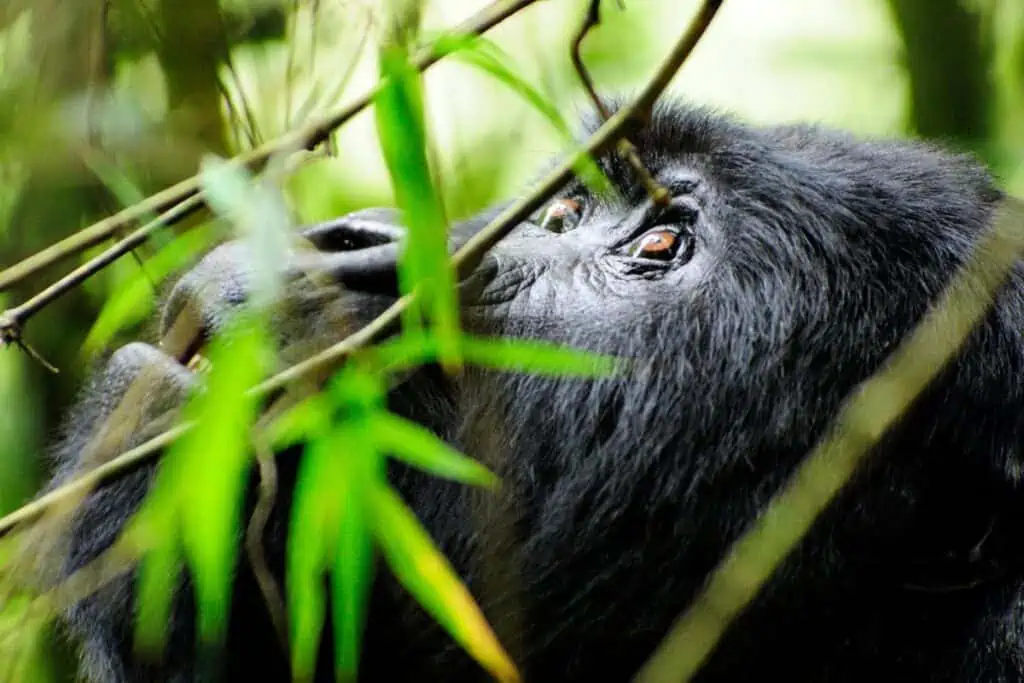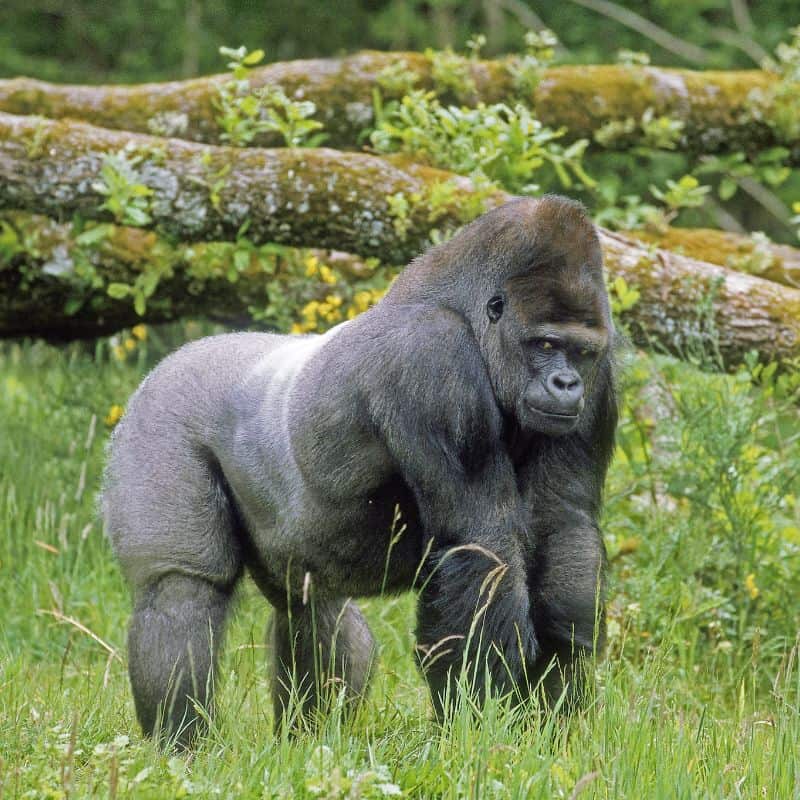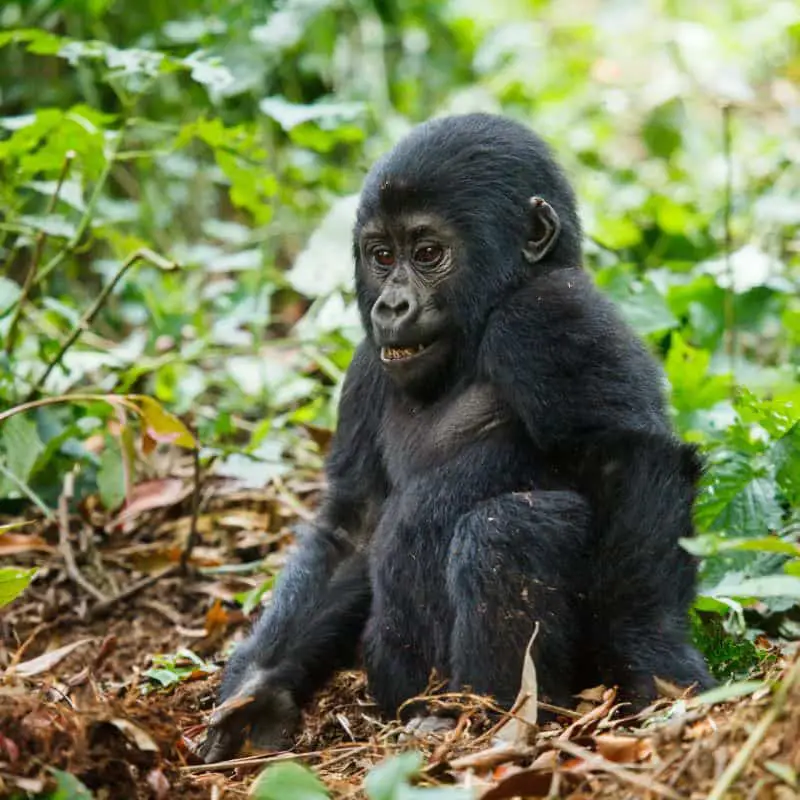Gorillas have seen their numbers drastically reduce in the last 25 years. With a 60% population drop in such a short timeframe, there is cause for concern, so just how many gorillas are left in the world?
There are over 105,000 gorillas left, but the vast majority are made up of one subspecies, the Western Lowland Gorilla. The three remaining species make up less than 5% of the total gorilla population in the world. The Eastern Cross River Gorilla is most at risk, with 100 and 250 individuals left in the wild.
Like many endangered species worldwide, the outlook for gorillas isn’t exactly positive. However, there have been population increases, and perhaps, not all hope is lost for these incredible, gentle giants.

Gorilla populations are struggling
While there have been some positive changes and minor increases in global populations, the sad reality is that these gains are hard-won battles.
Generally speaking, there is a trend of struggling populations that affect all of the four gorilla subspecies. Some more than others.
Western Lowland Gorillas
Of all the gorilla variants, the Western Lowland gorillas are, by far, the most common. All of the gorillas you will see in captivity outside of Africa, with the very rare exception, are of the Western Lowland variant.
Current estimates ranges vary quite a bit, but it is safe to conclude that there are more than 100,000 still alive in the wild.
This may seem like a large number, but they are still listed as endangered.
The reason is that the current total is 60% less than 20 – 25 years ago, so the population is rapidly declining.
The Western Lowland Gorillas population is still relatively high (compared to the other variants) because their habitats are spread across several countries, including Nigeria, Gabon, Congo, Cameroon, the Central African Republic, and Angola.
Eastern Lowland Gorillas

So, if a population of only 100,000 is so concerning, imagine having only 3,800 left. But, sadly, that is the terrible reality of the Eastern Lowland gorilla.
Eastern Lowland Gorillas, also known as Grauer’s gorillas, are the largest of four subspecies, making them the largest primate on earth.
Their natural habitats are also considerably less than that of the Western Lowland Gorilla, only occurring in three African countries. This limited spread increases their risk of decline as any threat to those environments directly threatens their population.
Eastern Mountain Gorilla
If you were to imagine a gorilla, the picture you have in your mind would most likely be that of the Mountain Gorilla.
These are the gorillas that only live in the volcanic mountain areas of Uganda, Congo, and Rwanda, that everybody dreams of seeing in person. And they are also the only species of gorilla that has seen a population increase during the last decade.
Their population has risen from around 600 to just over a thousand thanks to intensive conservation efforts.
Western Cross River Gorilla
This brings us to the rarest and most critically endangered of all the gorilla species: the Cross River Gorilla.
These gorillas get their name from the Cross River, which runs along the border between Cameroon and Nigeria. And sadly, there are only between 100 and 250 of them left.
The “critically endangered” rating given to these creatures is reserved for species in imminent danger of extinction.
How Many Silverback Gorillas Are Left?
You may have heard of the famous Silverback gorilla and wonder how many of them are left, so I thought it worth clarifying.
Silverback gorillas aren’t a subspecies of gorillas. It may surprise you that “silverback” refers to a male gorilla’s age and maturity, not its species.
Male gorillas reach adulthood at around eight years old, but they are still considered young adults at this stage. However, at around 12 years, the fur on their back and hips turn a silvery color, indicating that they have become mature adults and earning them the rank of “Silverback.”

Factors contributing to the decline of gorillas
One question you may have, especially when you read the Cross-River gorilla’s dire case and the Mountain Gorilla’s success, is why such efforts can’t be duplicated across the Gorilla species to ensure survival.
Several factors actively combat population increases.
The Destruction Of Gorilla Habitats
An ever-increasing threat to any wildlife population is the destruction of their habitat. Unfortunately, human expansion is increasing exponentially, and this expansion comes at a direct cost to the environment.
In the case of gorillas, active deforestation is a direct threat to them. This deforestation results from both natural wood harvesting and making room for urban or agricultural expansion.
Unfortunately, this is a compounding problem for Cross River and Mountain gorillas. Because they are already so severely limited by their habitats, any damage to those habitats has an almost immediate detrimental impact on them.
Fortunately, the areas declared and protected as conservation areas have also increased to combat habitat destruction.
Hunting And Poaching Of Gorillas
One of the worst realities is that there will always be a market for rare things. Human beings are just wired that way to desire what is considered rare.
That’s why we are willing to pay thousands of dollars for a stone that looks like glass, simply because we believe it to be rare.
Unfortunately, this desire is not limited to diamonds, and the market for critically endangered animals, such as gorillas, rhinos, pangolins, etc., is still alive and well.
And the resultant poaching is an active threat to the animals and the rangers who protect them.
On the other hand, some people hunt for bushmeat as a subsistence food resource. While these people do not necessarily target gorillas specifically, they are also unlikely to pass the opportunity to kill one for its meat.
Low Gorilla Population Further Decreases The Population
Another crucial fact often overlooked is how difficult it is for species to recover from an ultra-low population.
Consider the Cross River gorilla, which has a tiny remaining population of around 200. Unfortunately, this small population also means they have very small breeding- and, subsequently, gene- pool.
Unfortunately, this is a pretty big challenge. Not only does it make it very difficult to naturally breed intolerance to certain diseases, but it also increases the chances of breed-in certain weaknesses.
This is one of the reasons why it has taken more than a decade to gradually increase the Mountain Gorilla population.

Is tourism good for the gorillas’ survival?
At the risk of jumping headfirst into a bath of contention, we also need to consider whether tourism, like Gorilla walks, isn’t adding to the problem.
In short, if the practice is done ethically, disturbing the animals and the habitat as little as possible, then the practice could benefit their conservation.
The reason is that conservation is rarely an inexpensive practice, and without the proper funding, conservation will fail.
In other words, ethical tourism, though perhaps not ideal, can be seen as a “necessary evil” because of the conservation funds it generates.
Final thoughts on how many gorillas are left
There are four gorilla subspecies, and all of them are listed as endangered, except for the Cross-River gorilla, which is listed as critically endangered.
There are more than 100,000 Western Lowland gorillas, around 3,800 Eastern Lowland gorillas, just over 1,000 Mountain gorillas, and between 100 and 250 Cross-River gorillas left.
Despite continued conservation efforts, three subspecies’ populations have declined over the last 20 to 25 years.
This decline results from habit loss and destruction, hunting and poaching, and the difficulty of the species to breed with stronger genes because of the small population.
